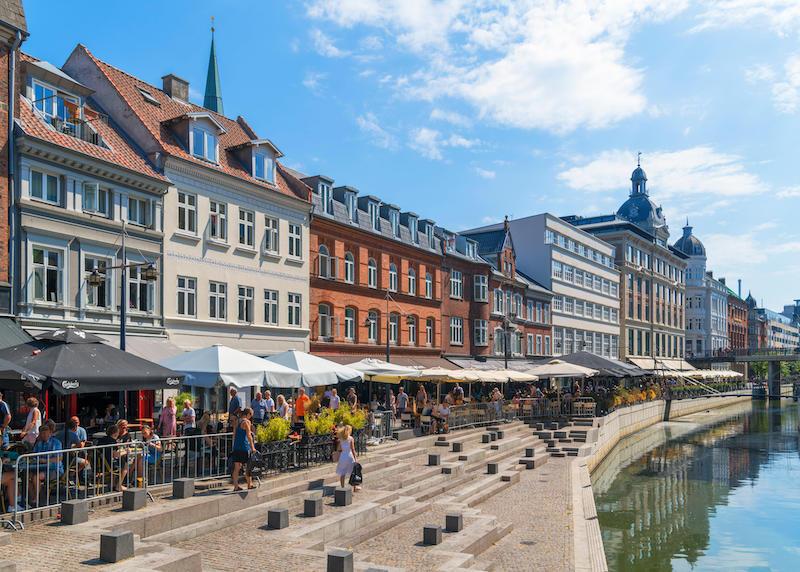
Aarhus city center.
Tourism in Aarhus, Denmark's second-largest city on the Jutland Peninsula, remains robust, with more than 4.5 million overnight stays recorded in 2023, just shy of the record-breaking figures in 2022.
Pia Lange Christensen, CEO of VisitAarhus, the co-host of Routes Europe 2024, highlighted the city’s resilience since the pandemic and tourism’s importance to the local economy.
“Tourism plays a significant role in the Aarhus region, with a turnover of more than 10 billion Danish krone ($1.4 billion) per year," Christensen tells Routes. “It creates jobs, cultural life and experiences for the locals, helping to develop the local communities and the entire area.”
One particularly promising trend is the notable growth in inbound visitor numbers from southern European destinations. Markets such as France, Italy, Belgium, Spain, Switzerland and Austria have experienced significant increases, ranging from 19% to 56% since 2019.
Germany, Aarhus’ largest international market, has also seen a substantial 36% increase over the same period.
“These markets hold considerable potential for further growth,” Christensen says. “Their interest in Aarhus reflects the city's appeal and diverse offerings.”
Aarhus is often referred to as “The City of Smiles” and in February was named the happiest city in the world by the British Institute for Quality of Life. The Happy City Index measures factors such as education, economy, local politics, commuting and access to green areas.
To increase awareness among international travelers, VisitAarhus conducts extensive marketing campaigns, including the recent success of “Your Local Love,” aimed at showcasing the region's attractions. Key points of interest for tourists in the region include the ARoS Aarhus Art Museum, the Tivoli Friheden amusement park and the Randers Regnskov tropical zoo.
Additionally, Aarhus handles almost 70% of all Danish imports and exports as well as cruise ships in its city-center deep-water harbour and has one of the largest freight capacities in Scandinavia, at 12 million metric tons annually.
VisitAarhus is also working to ensure the city’s tourism growth happens in a more sustainable manner. Collaborating with more than 130 local companies through a sustainability network, the tourism organization promotes green practices and encourages certification among tourism businesses.
"We are constantly working to push the green transition and encourage tourism companies to work with sustainability and become certified," Christensen says. Aarhus now ranks sixth on the Global Destination Sustainability Index.





